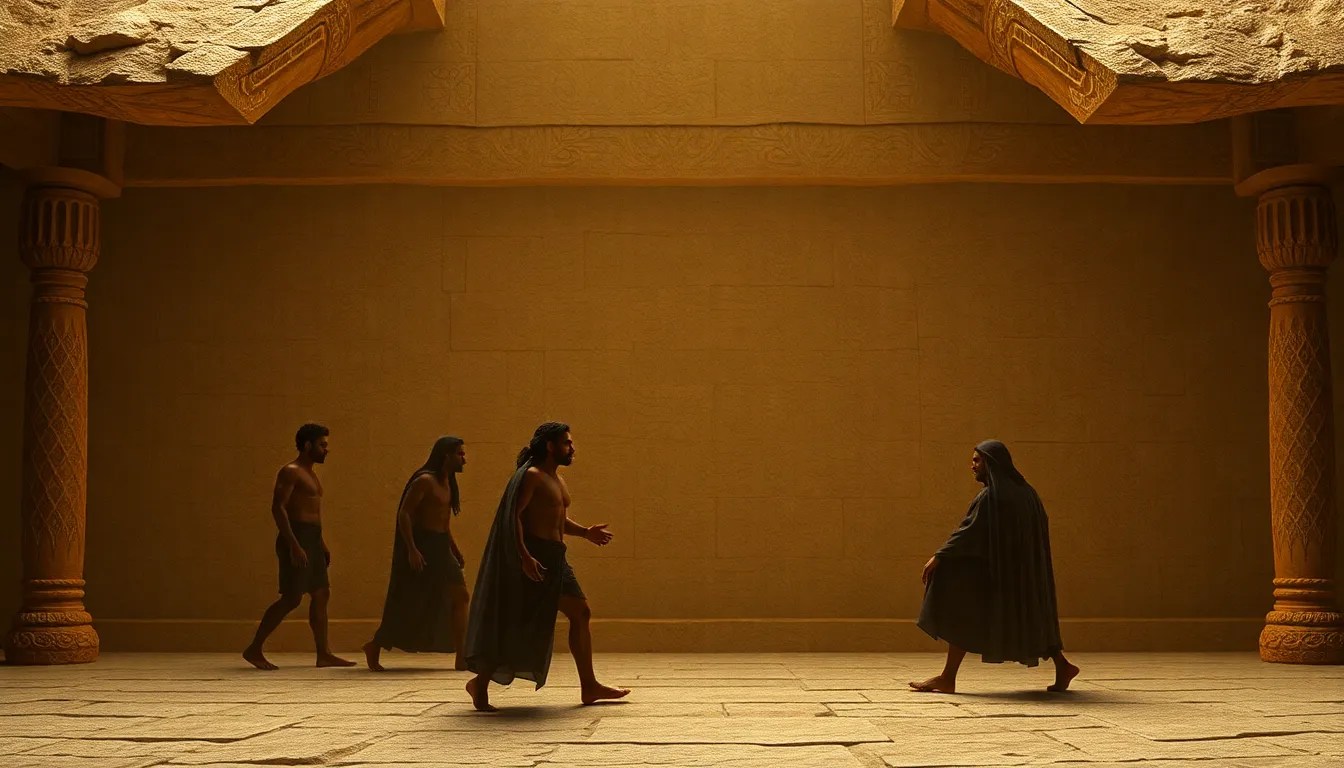Theatrical Elements of the Atrahasis Epic: A Performance Analysis
I. Introduction
The Atrahasis Epic is one of the most significant literary works from ancient Mesopotamia, recounting the story of Atrahasis, a hero tasked with surviving a great flood sent by the gods. This epic not only serves as a mythological narrative but also embodies crucial theatrical elements that highlight the importance of performance in ancient cultures. Theatrical elements in narratives enrich the audience’s experience and provide insights into the cultural and social values of the time. This analysis aims to explore the performance aspects of the Atrahasis Epic within the context of Babylonian mythology, shedding light on how these elements contribute to its enduring legacy.
II. Historical Context of the Atrahasis Epic
The Atrahasis Epic dates back to the Old Babylonian period (circa 18th century BCE) and is thought to have been composed in Akkadian. It reflects the socio-political and religious landscape of ancient Mesopotamia, where storytelling played a crucial role in preserving cultural identity and heritage.
Performance held significant cultural importance in Mesopotamian society, where oral traditions were paramount. Stories were transmitted through generations via oral recitation, allowing for dynamic engagement with the audience. This oral tradition not only preserved the epic but also facilitated its adaptation and reinterpretation, ensuring its relevance across ages.
III. Structure and Composition of the Epic
The Atrahasis Epic is structured into several distinct sections that detail the creation of humanity, the gods’ dissatisfaction with humans, and the subsequent flood narrative. The narrative unfolds in a linear fashion, interspersed with flashbacks and dialogues that enrich the plot.
Character development is significantly enhanced through the use of dialogue and monologue. Key interactions between Atrahasis and the gods reveal their motivations, emotions, and conflicts. For example:
- Atrahasis’ dialogues with Enki, the god of wisdom, illustrate his struggles and insights.
- The gods’ monologues express their frustration with humanity, emphasizing their divine authority.
Repetition and variation are also critical components of the storytelling technique, reinforcing themes and enhancing the epic’s rhythmic quality. This technique not only aids memorization but also amplifies emotional resonance during performances.
IV. Characterization and Role of Actors
Key characters in the Atrahasis Epic include:
- Atrahasis: The protagonist who embodies the resilience of humanity.
- The Gods: Particularly Enlil, the chief god, whose decisions drive the narrative conflict.
- Enki: The protective deity who guides Atrahasis, contrasting with the other gods.
Theatrical archetypes emerge within these characters, reflecting universal themes of struggle, defiance, and survival. The dynamics of conflict and resolution among these characters drive the narrative forward, showcasing the balance between divine will and human agency.
V. Symbolism and Imagery in Performance
The Atrahasis Epic is rich with symbolic elements that contribute to its depth and meaning. Water, as a symbol, represents both destruction and rebirth, reflecting the duality of the flood narrative. Other significant symbols include:
- The Boat: A symbol of salvation and human ingenuity.
- The Gods’ Masks: Representing divine authority and the unpredictable nature of the deities.
Visual and auditory imagery played a vital role in ancient performances, creating a multi-sensory experience for the audience. Performers likely utilized costumes, props, and vocal modulations to evoke emotions and enhance the narrative’s impact. Audience interpretation was an active process, engaging them in the themes and moral lessons woven throughout the epic.
VI. Ritualistic and Ceremonial Aspects
The Atrahasis Epic is deeply intertwined with religious rituals, reflecting the ancient Mesopotamians’ beliefs and practices. The recitation of the epic may have been performed during important ceremonies, such as harvest festivals or religious observances, reinforcing the community’s connection to their mythology.
Ceremonial performances likely elevated the narrative’s significance, transforming it into a communal experience that reinforced social cohesion. Rituals not only enhanced the theatrical experience but also served as a means of invoking divine favor and understanding cosmic order.
VII. Modern Interpretations and Adaptations
The Atrahasis Epic has influenced contemporary theater and literature, inspiring various adaptations that explore its themes and characters. Notable adaptations include:
- Theatrical Performances: Modern playwrights have reimagined the epic, emphasizing its relevance to contemporary issues such as environmentalism and human rights.
- Literary Works: Authors have drawn upon the themes of survival and divine conflict, weaving them into new narratives.
The relevance of ancient performance techniques, such as the use of chorus and call-and-response, can be found in modern storytelling, demonstrating the timeless nature of theatrical expression.
VIII. Conclusion
This analysis has explored the theatrical elements within the Atrahasis Epic, illuminating how they contribute to its narrative depth and cultural significance. The interplay of character, symbolism, and ritualistic performance reflects the rich traditions of Babylonian mythology and its enduring legacy in storytelling.
As we continue to study these ancient texts and their performance aspects, we gain valuable insights into the human experience, bridging the past and present in the art of narrative.



